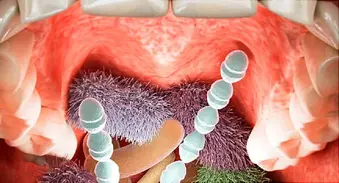Germs Quiz: What Lives in Your Mouth?


Question 1/14
The number of bacteria in your mouth is closest to the population of which of the following?
- New York City
- The United States
- North America
- Earth
Question 2/14
A dog's mouth is cleaner than a human's.
- True
- False
Question 3/14
If you drop food on the floor, it doesn't get germs on it if you pick it up within 5 seconds.
- True
- False
Question 4/14
Anyone who kisses someone with gum disease will always get it.
- True
- False
Question 5/14
If you find yourself without a toothbrush, it's a good idea to borrow a friend's.
- True
- False
Question 6/14
Which of the following items can transfer potentially dangerous microbes between people?
- Lipstick
- Drinking glasses
- Band instruments
- All of the above
Question 7/14
To protect your toothbrush from harmful germs, you should:
- Leave it out in the open air
- Store it in a closed container
- Soak it in an antibacterial mouthwash
- Microwave it for 15 seconds
Question 8/14
To avoid the buildup of bacteria, the American Dental Association recommends replacing your toothbrush every month.
- True
- False
Question 9/14
Antiseptic mouthwashes can keep your gums and teeth healthy.
- True
- False
Question 10/14
Drinking green tea may help keep your teeth and gums healthy.
- True
- False
Question 11/14
All bacteria are bad for the health of your teeth and gums.
- True
- False
Question 12/14
Most bacteria in your mouth live in plaque.
- True
- False
Question 13/14
Bacteria in your mouth can cause tooth decay by:
- Eating tooth enamel
- Releasing acids that weaken tooth enamel
- Releasing sugars that destroy tooth enamel
- All of the above
Question 14/14
Research has shown a link between gum disease and:
- Cardiovascular disease
- Diabetes
- Alzheimer's disease
- All of the above
